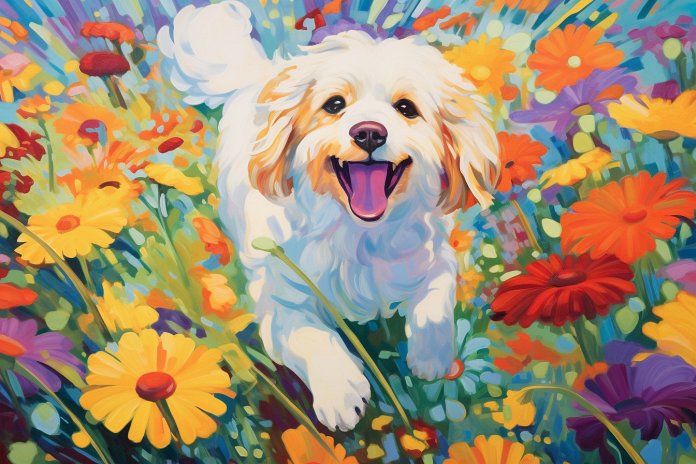
The debate about how dogs experience and feel emotions has been ongoing, but we have learned a lot about it over the years. Many dog owners argue that dogs can love, hate, and feel a range of other emotions, and researchers generally agree with this. Through studies, we have discovered that dogs can feel love and affection, suspicion, joy, anger, fear, disgust, contentment, distress, and excitement and arousal. If dogs can feel these emotions, it means they can also experience cheerfulness, although it may look different in dogs compared to humans.
Signs Your Dog Can Feel Cheerfulness
It is usually easy to tell when your dog is happy and cheerful. They may wag their tail rapidly, “smile” with their tongue out, and jump around excitedly. Each dog is different, so observing their behavior will give you a better understanding of their emotions. Dogs can emotionally connect with humans and feel certain emotions not just through instinct or learned behavior, but also because of their cognitive ability. They rely on their senses to understand their humans and associate the information with an emotion. When dogs feel happy and cheerful, they will act in a way that pleases both themselves and their owners.
Body Language
Here are some signs that your dog is feeling cheerful: being alert, tilting their head, listening attentively, wagging their tail, and having their ears up. Other signs include following you around, looking at you with affectionate eyes, and sticking close by your side.
History Behind Dogs Feeling Cheerfulness
In the past, studies on dogs’ emotions were influenced by religious beliefs. The church scholars who first explored the subject suggested that animals, like humans, have souls. However, some philosophers, like Rene Descartes, viewed animals as machines or robots that could be programmed to feel certain things. Science has since progressed, and we now know that dogs have brain structures and hormones similar to humans that create emotions. Dogs have emotional capacities similar to a two-year-old human, meaning they can experience basic emotions like cheerfulness.
Science Behind Dogs Feeling Cheerfulness
Emotions drive dogs’ behavior and reactions in different environments, just like humans. When dogs wag their tail or shower their owners with affection, it signifies love, happiness, joy, and cheerfulness. Dogs learn through observation and paying attention to their humans and other animals. They understand that wagging their tail makes their human happy and increases the chances of getting a treat. Dogs’ brain chemistry and structure also play a role in their emotional capacity. Similar to humans, dogs release dopamine (the chemical responsible for love and happiness) and adrenaline (the chemical regulating hate) when experiencing emotions. By spending time with your dog, you can become better at interpreting their barks and understanding when they are happily cheerful.
Training Your Dog to Feel Cheerfulness
You cannot train a dog to feel a specific emotion, just like you cannot train a human to feel something. Emotions are personal and unique to individuals. However, you can help your dog experience true happiness and cheer by building a bond based on kindness and love. Using a high-pitched, sing-songy voice can communicate positive emotions to your dog and help them trust you.
“In dogs, cheerfulness is not just a feeling, it’s a way of life.”

Tips & Things to Know
1️⃣ Dogs can experience a range of basic emotions similar to humans, including love, affection, joy, and cheerfulness. They convey these emotions through behaviors like wagging their tail, ‘smiling’, or following you around, which can indicate their happiness and contentment.
2️⃣ The ability of dogs to connect emotionally with humans and display certain emotions is seen as a sign of cognitive ability. They use their sense of smell, hearing, and sight to understand their humans and associate this information with an image of an emotion. When a dog is happy or cheerful, they will act in a way that feels good to them and also pleases their human.
3️⃣ While it’s not possible to train a dog to feel a certain emotion, there are ways to help your dog feel happiness and cheer. Building a strong bond with your dog is important, and using a high-pitched, sing-songy voice when talking to them can help them recognize positive emotions and foster trust.
Frequently Asked Questions, Answered ✅
1. What emotions do dogs experience according to researchers?
– Dogs can feel emotions such as love, suspicion, joy, anger, fear, disgust, contentment, distress, and excitement.
2. How can you tell if your dog is feeling cheerful?
– Signs of cheerfulness in dogs include wagging tail, ‘smiling’ with tongue out, jumping around excitedly, being alert, tilting their head, listening, having their ears up, following you around, and sticking close by your side.
3. What is the history behind dogs feeling cheerfulness?
– Early philosophers and scientists believed animals, including dogs, have emotions. However, the idea of dogs having emotions was initially rooted in the church. Rene Descartes suggested animals were like machines that could feel certain things. Nowadays, scientific research has shown that dogs have brain structures and hormones that create emotions similar to humans.
4. What is the science behind dogs feeling cheerfulness?
– Dogs, like humans, have brain chemistry and structures that contribute to emotions. They release dopamine (responsible for love and happiness) and adrenaline (controls hate) when experiencing emotions. Dogs also learn through observance and pay attention to their humans and other animals.
5. Can you train your dog to feel cheerfulness?
– Training a dog to feel a specific emotion is not possible, as emotions are personal and unique to each individual. However, building a bond with your dog through kindness and love can help them feel true happiness and cheer. Using a high-pitched, sing-songy voice can also convey positive emotions to your dog and help build trust.